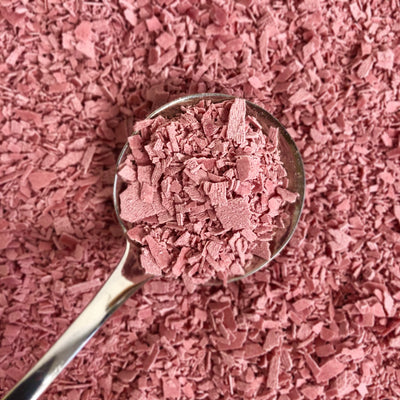Are Arabica coffee beans the best?
Today it’s almost impossible to escape advertising pushed by leading fast food chains that would lead you to believe that the only coffee worth drinking is 100% Colombian Arabica. There’s a widely held perception that Arabica coffee beans are the best and superior to their counterpart Robusta but is this really the case? We explore the UK coffee market, the differences between Arabica and Robusta coffee beans and what makes them both brilliant in their own ways.
BUT, ARE ARABICA COFFEE BEANS REALLY THE BEST?
In the UK, the majority of coffee drinkers who head to their local high street coffee chain of choice prefer their coffees to be milk based. According to the Allegra Café UK report (2017) milky coffees dominate the popular selection of coffee consumed with lattes being the most consumed coffee drink in the UK. This is important to note due to the nature of coffee and the individual characteristics which make Arabica and Robusta both valuable for coffee drinkers. Milk often makes up more than two thirds of the overall drink and the sweet gentle characteristics of Arabica can be easily masked underneath the taste of the milk.
Very often coffee blends are the best option and most practical coffee. Arabica and Robusta are both valued by coffee roasters and baristas for their own individual characteristics. Blended coffees incorporate multiple sources of coffee from around the world and coffee experts generally prefer blends for use as espresso. Blended coffees quite often have more character, a deeper, complex flavour profile and are more commercially suited to lattes, flat whites and cappuccinos. Importantly, by using a blend trained baristas can create a balanced drink that can cut through the flavour of the milk to allow the characteristics of the coffee to come through.
Traditionally Northern Europe has preferred the gentler, sweeter characteristics of Arabica, whilst Southern Europe has been accustomed to high percentage (darker-earthier more bitter Robustas) But changing tastes & harmonising towards Arabica / Robusta Blends with more body and overall character are what dominate coffee shop use today, with different blends of beans to suit different brew methods to capture each of the beans individual origin and roast profile characteristics.
One of Rob’s (Farrer’s master roaster) personal favourites is Farrer’s No 1. Blend. Part of our signature collection this coffee blend is perfectly balanced and one of our most popular coffees, designed to be brewed at a coarser grind in cafetiere or pour over devices.
ARABICA COFFEE BEANS VS ROBUSTA
It can be difficult to distinguish between the two and often easy to mistake one another given the amount of varieties of beans and origins within coffee but here are the main characteristics and differences between the two types of coffee beans.
CHARACTERISTICS OF ARABICA COFFEE BEANS
Arabica beans are known for their sweetness, acidic, smooth and aromatic qualities with delicate floral and fruity notes. Typically Arabica is more expensive than Robusta due to its desirable difference and distinct top notes. Many outlets and cafes will invest in high quality Arabica coffee to serve to their clientele.
- Arabica makes up 70% of the world’s coffee production.
- Notably found in Colombia and Indonesia & Brazil.
- Arabica coffee plants, grow at altitudes from 1000M to 2600M.
- They require a lot of rain, but free draining soil.
- Arabica coffee beans are large, rugby ball shaped. As a rule they have a waved line through their centre and are prized for their acidity, aroma and mild flavours.
- Grown in the main on steep sided hills Arabica beans have to be painstakingly handpicked.
WHAT’S THE BEST WAY TO ENJOY ARABICA COFFEE?
The best way to enjoy Arabica coffee to the fullest is through preparing them to be drunk black or with a splash of milk. This allows the mild and acidic flavours to be appreciated to the fullest. If you enjoy your coffee black we would recommend that you try our Colombian coffee in either a filter or cafetiere grind.

(Image by @rumpf on Unsplash: https://unsplash.com/photos/LMzwJDu6hTE)
Arabica coffee beans are typically large and rugby ball shaped. They also have a waved line through their centre.
CHARACTERISTICS OF ROBUSTA COFFEE BEANS
Robusta coffee beans are known for their harsh deep body, powerful strength, salty, coarse and dark flavours and a subtle low aroma. These qualities lend themselves well to creating a full strength soluble or instant coffee, which is why you’ll find blends containing a percentage of Robusta commonly used for instant coffee powders and granules. Robusta is often overlooked but when blended with Arabica it makes a high caffeine impressive espresso. Its bitter and powerful flavours become sweeter and softer through espresso and cut through milk with ease, giving a lingering and intense coffee flavour.
-
- Robusta makes up 30% of the world’s coffee production.
- Notably grown in Vietnam, India and Southern Brazil.
- Robusta coffee plants, grow at lower altitude normally less than 1,000M and as such can be grown on plains.
- They are hardier and can resist higher roasting temperatures.
- Robusta coffee beans are smaller, rounder and more bitter, they have an earthy taste and low aroma.
- Robusta beans can be mechanically harvested as they can be grown on flatter land.
Our carefully roasted Robusta makes the ideal espresso when blended with a base Arabica. Why not try our Classic Espresso blend to get yourself acquainted with this often underappreciated wondrous coffee beans taste.





